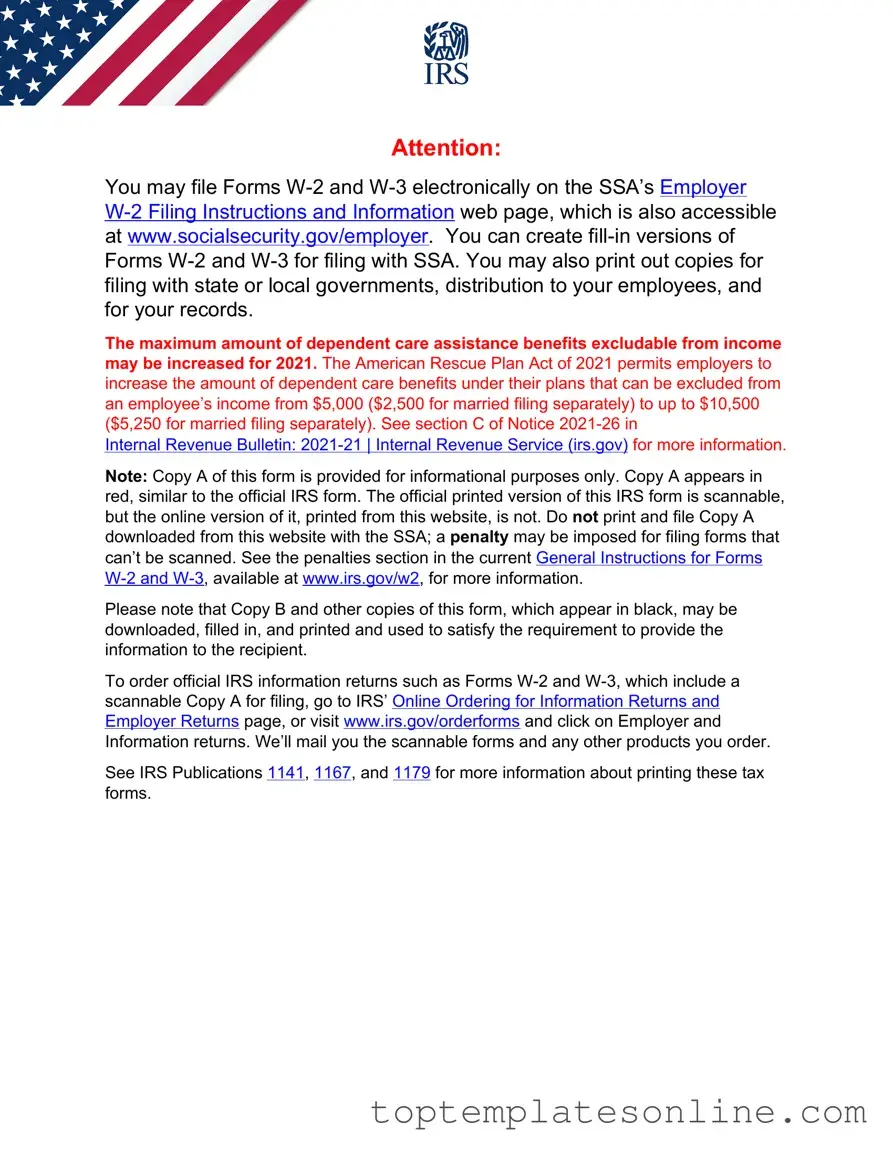The IRS W-2 form plays a crucial role in the annual tax filing process for employees across the United States. This document, officially titled the Wage and Tax Statement, provides a comprehensive summary of an employee's earnings and the taxes withheld throughout the year. Each year, employers are required to issue a W-2 to their employees by January 31, detailing important information such as total wages earned, Social Security and Medicare contributions, and federal and state tax withholdings. Understanding the various boxes on the form is essential, as they contain critical data that influences how individuals report their income and calculate their tax obligations. Moreover, the W-2 form is not only vital for employees; it also serves as a key reporting tool for the IRS, ensuring that employers fulfill their tax responsibilities. For those who are self-employed or work as independent contractors, the W-2 differs from the 1099 form, which is used to report income from non-employee compensation. As tax season approaches, familiarity with the W-2 form can help individuals navigate their financial responsibilities with confidence and accuracy.
